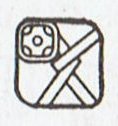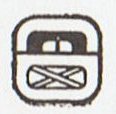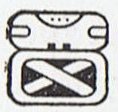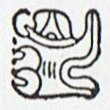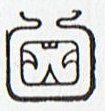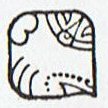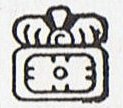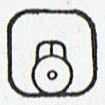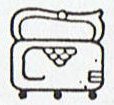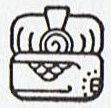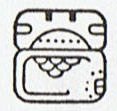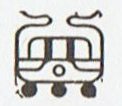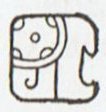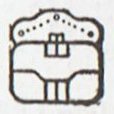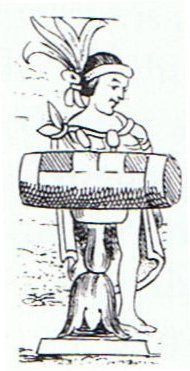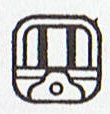8. In the Mayan calendar, which we have worked with earlier, there are 2 months with drum signs, viz. 16 Pax and 19 Vayeb:
I have ordered the glyphs accordingly, with the last 3 of them as a separate group. There is a sign, tun, which occurs both in 16 Pax and 19 Vayeb, and it has been identified as a picture of a log drum:
The tun glyph was identified as a wooden drum by Brinton ... and Marshal H. Saville immediately accepted it ... [the figure above] shows the Aztec drum representation relied on by Brinton to demonstrate his point. It was not then known that an ancestral Mayan word for drum was *tun: Yucatec tunkul 'divine drum' (?); Quiche tun 'hollow log drum'; Chorti tun 'hollow log drum' ... (Kelley) The word tun was used when counting, for instance in katun = 20 days, and it had a glyph of its own:
The [tun] glyph is nearly the same as that for the month Pax ... except that the top part of the latter is split or divided by two curving lines. Brinton, without referring to the Pax glyph, identified the tun glyph as the drum called in Yucatec pax che (pax 'musical instrument'; che < *te 'wooden). Yucatec pax means 'broken, disappeared', and Quiche paxih means, among other things, 'split, divide, break, separate'. It would seem that the dividing lines on the Pax glyph may have been used as a semantic/phonetic determinative indicating that the drum should be read pax, not tun ... Thus, one may expect that this glyph was used elsewhere meaning 'to break' and possibly for 'medicine' (Yuc. pax, Tzel., Tzo. pox). (Kelley) The idea of 'break' agrees with the picture in Cb1-6 (where 1-6 presumably is to be read as 16, the number of the Pax month):
|
|||||||||||||||||||||||||||||||||||||||||||||||||||||||
